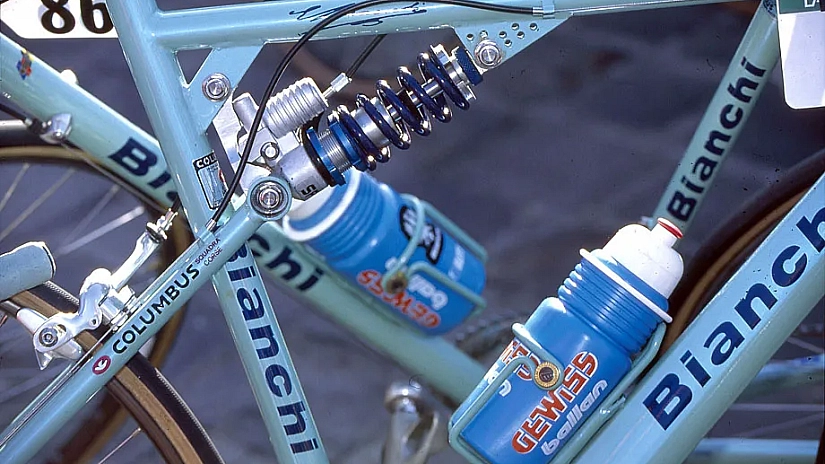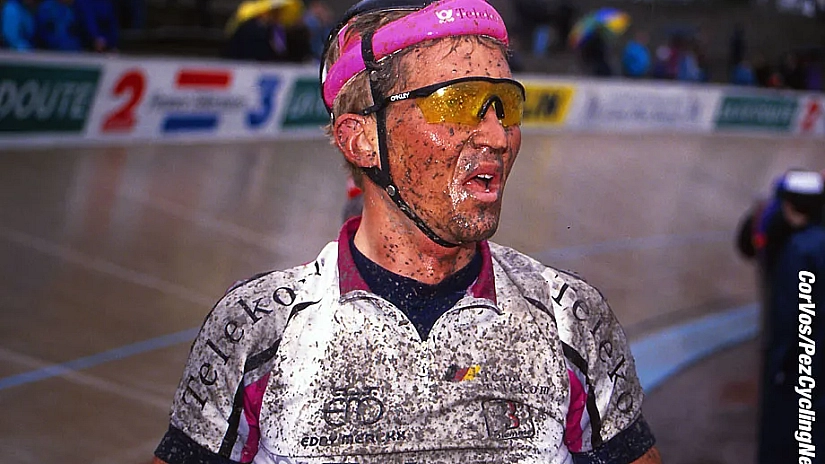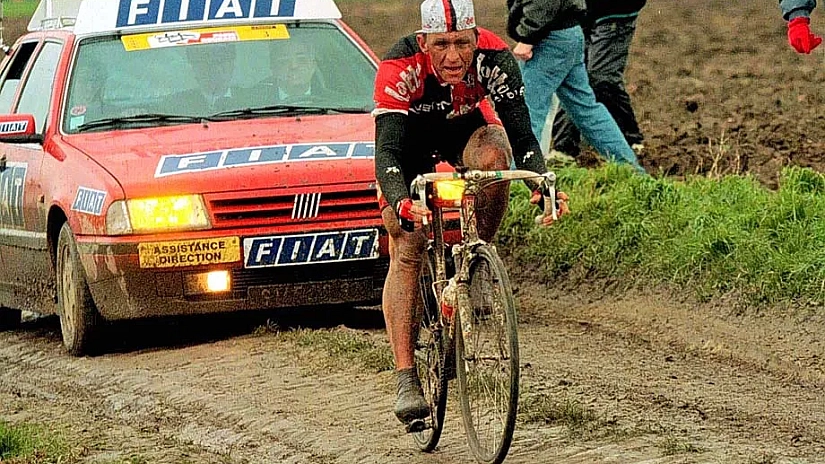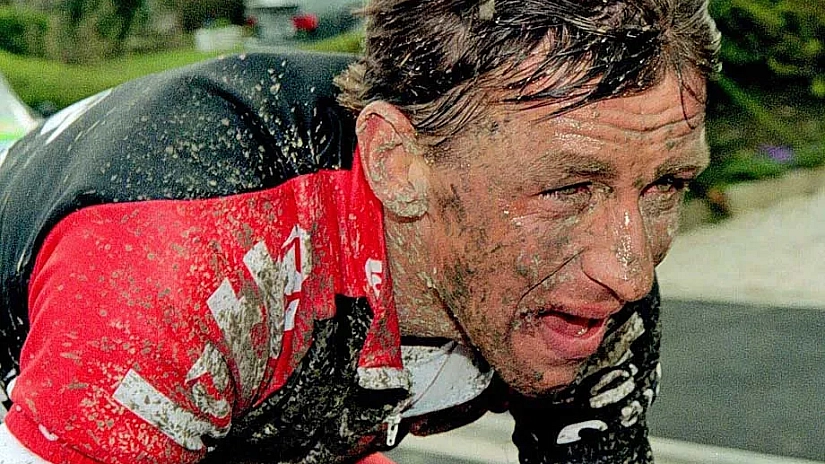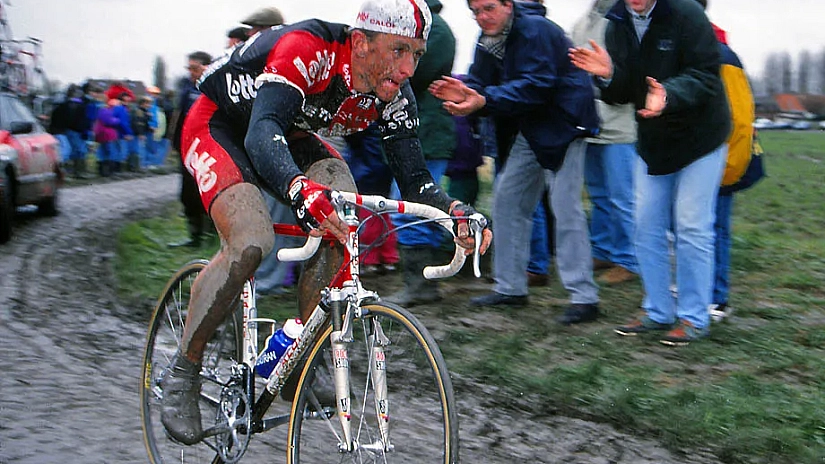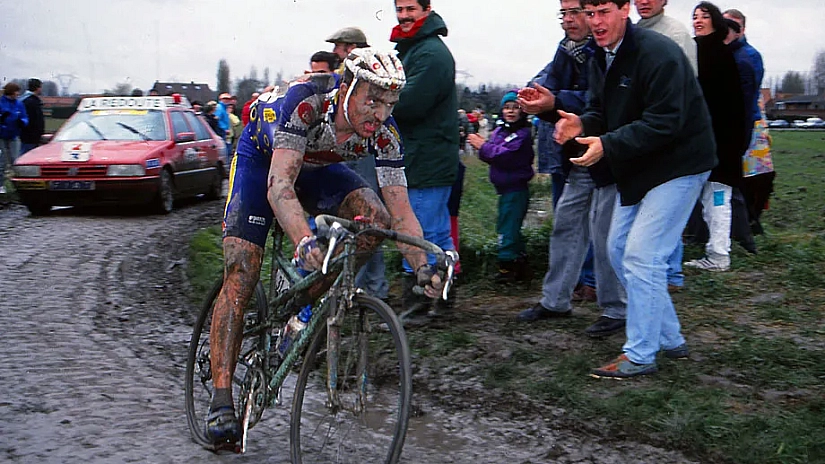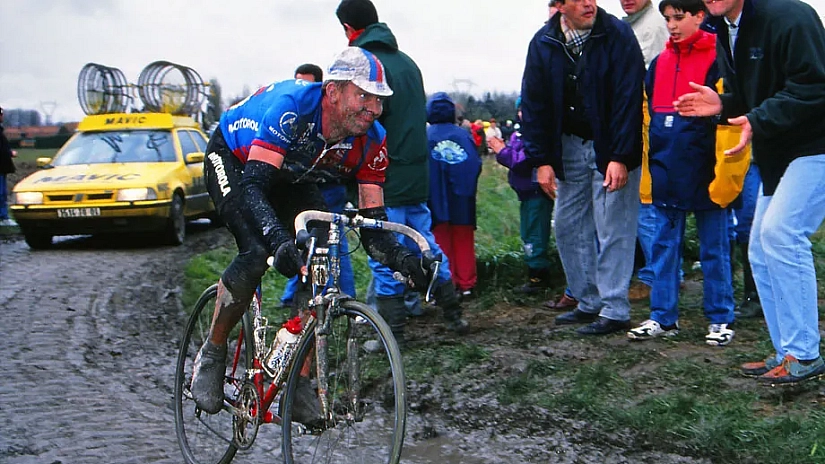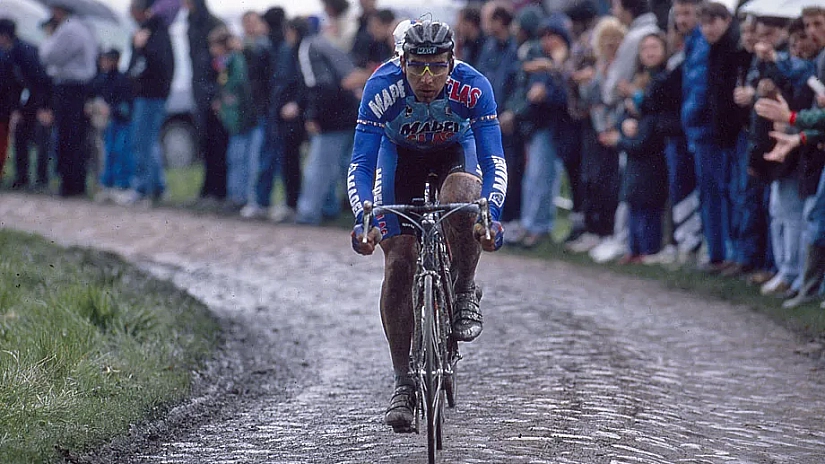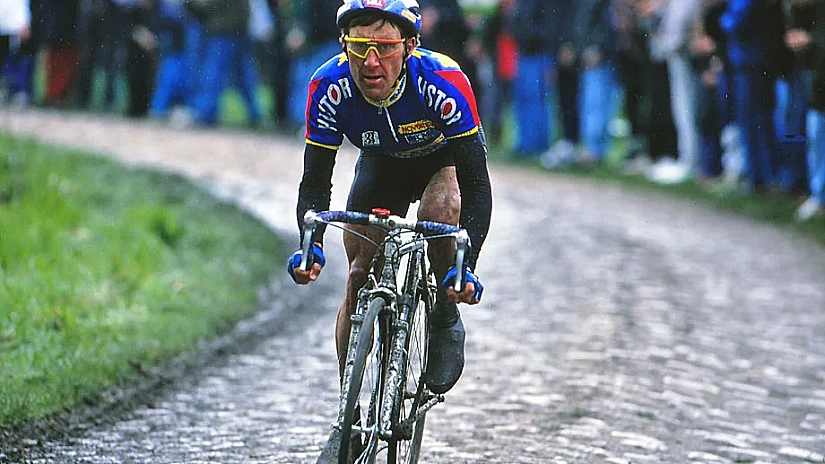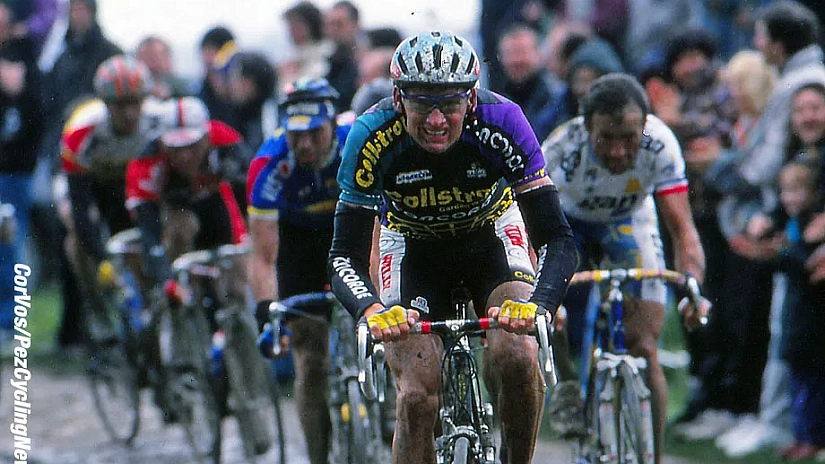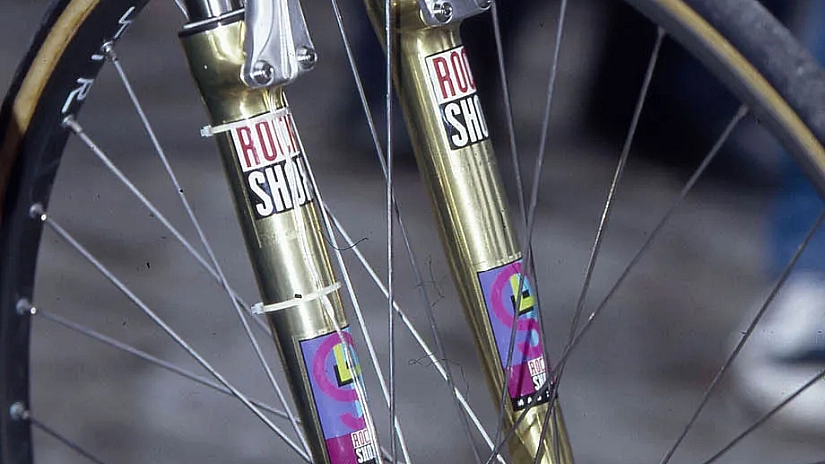სურათის წყარო: pezcyclingnews.com
“Hell of the North” is no stranger to chaos - but in 1994, it was pure mayhem on wheels.
When you think of Paris–Roubaix, you picture dust, mud, broken wheels, and weary faces battling over ancient cobblestones. But the 1994 edition of the race wasn’t just about brutal endurance—it was a mechanical experiment gone wild. That spring, teams showed up not just with legs of steel, but bikes that looked like they belonged on the moon.By 1994, Paris–Roubaix had become a testing ground for radical ideas in bike design. The notorious pavé sectors—particularly Carrefour de l'Arbre and Arenberg—were so punishing that riders and engineers were desperate for comfort and control. The solution? Suspension.
Johan Museeuw’s Full-Suspension Bianchi (Germany)
Museeuw, already a classics legend, rode a full-suspension Bianchi that looked more like a mountain bike than a road racer. It had a rear swingarm with a coil shock, designed to absorb the relentless pounding of the cobbles. Unfortunately, it backfired—his frame cracked mid-race, a reminder that innovation sometimes needs a few more test rides.Greg LeMond’s Titanium Softail (U.S.A)
LeMond rolled out on a Clark-Kent titanium frame featuring RockShox suspension forks and a unique rear damper. A twist-grip control on the handlebars allowed him to adjust the suspension while riding—years ahead of its time. LeMond may not have won, but his bike became a symbol of fearless experimentation.Gilbert Duclos-Lassalle’s RockShox-Equipped Machine (France)
Duclos-Lassalle, the elder statesman of the cobbles, brought back the suspension fork he’d used to win in previous years. But in 1994, a puncture dashed his hopes. Still, his bike proved that suspension wasn't just a gimmick—it could win Paris–Roubaix.Andrei Tchmil’s Caloi: The Winner’s Weapon (Moldova)
While others pushed radical new setups, Tchmil went with a balanced approach. His Caloi bike, equipped with RockShox forks but a more traditional rear end, gave him the confidence to attack solo 67 km from the finish. He rode into Roubaix Velodrome alone, covered in grime, victorious and vindicated.The 1994 race marked a short-lived but memorable chapter in road bike innovation. Suspension forks would soon fade from pro road racing—too heavy, too complex, too unpredictable. But the spirit of that year lived on. Many of today’s endurance bikes owe their relaxed geometry, wider tires, and shock-absorbing tech to the lessons learned on the cobbles of ’94.
Paris–Roubaix 1994 wasn't just a race—it was a battlefield of ideas, and one of the most unforgettable showdowns between man, machine, and Mother Nature in cycling history.
Date: 2025-05-12
Author: Misha Peradze
